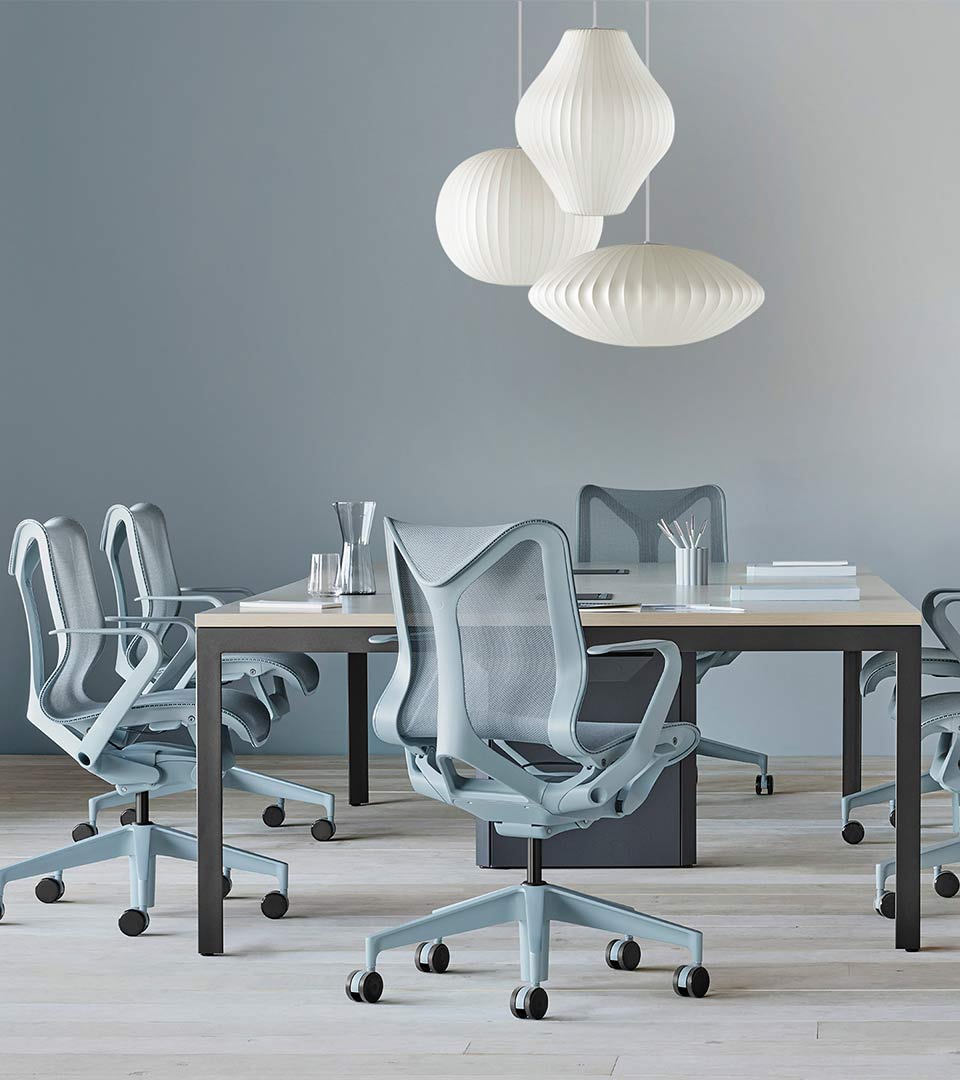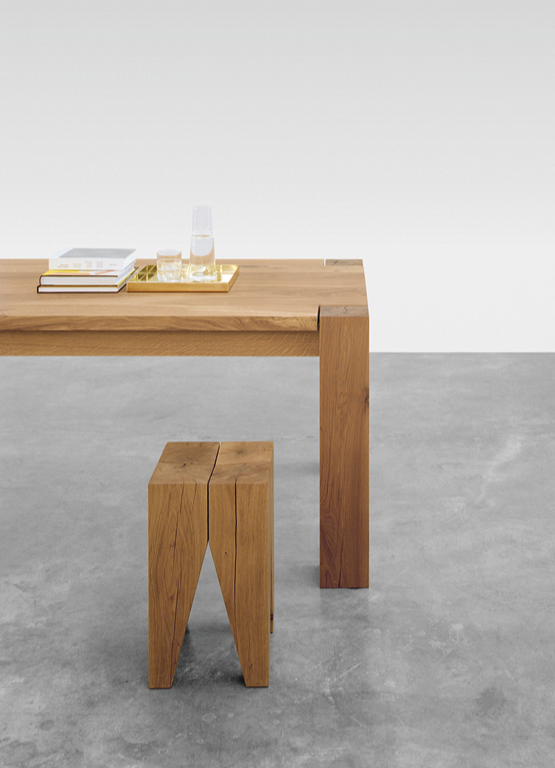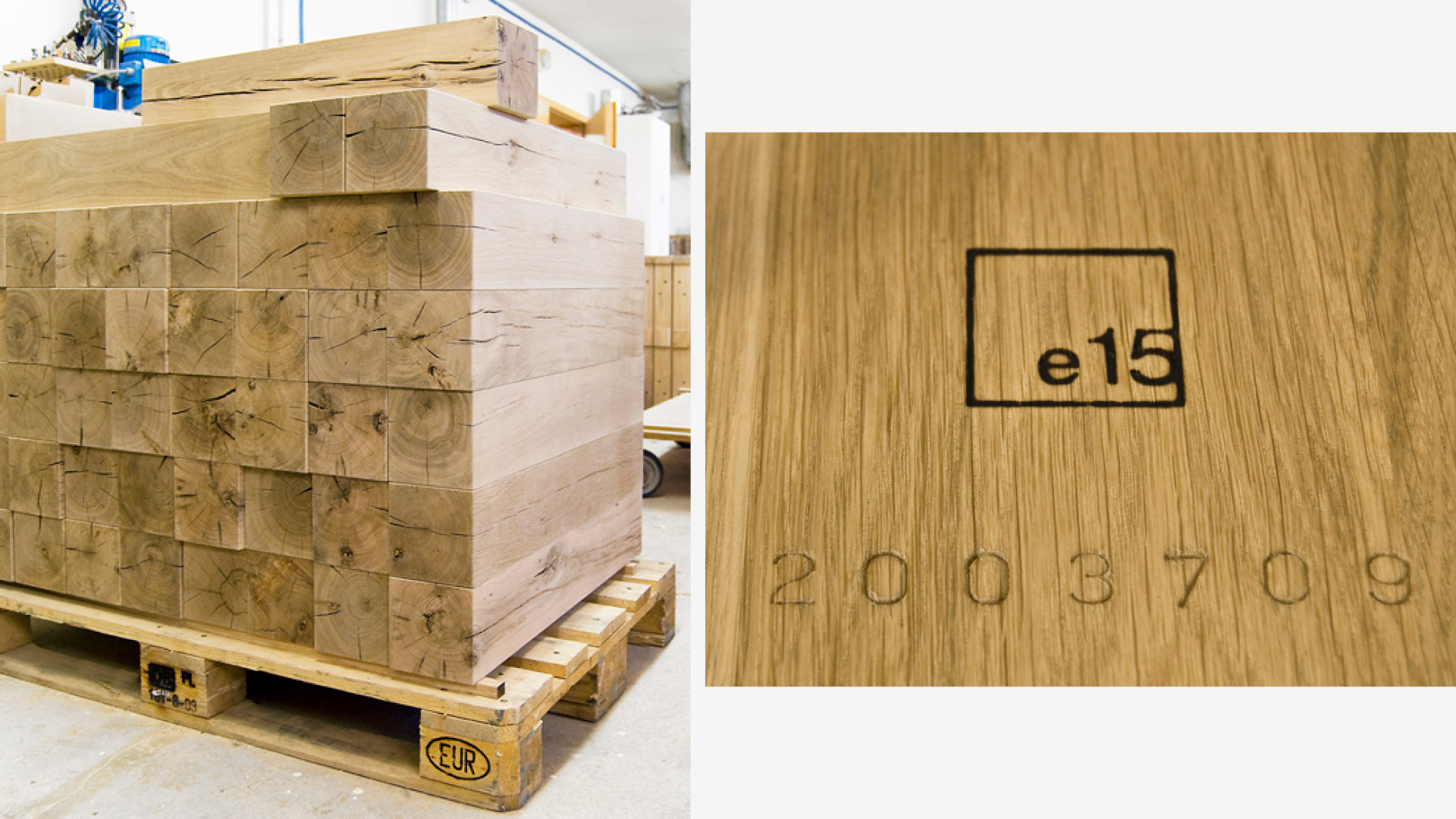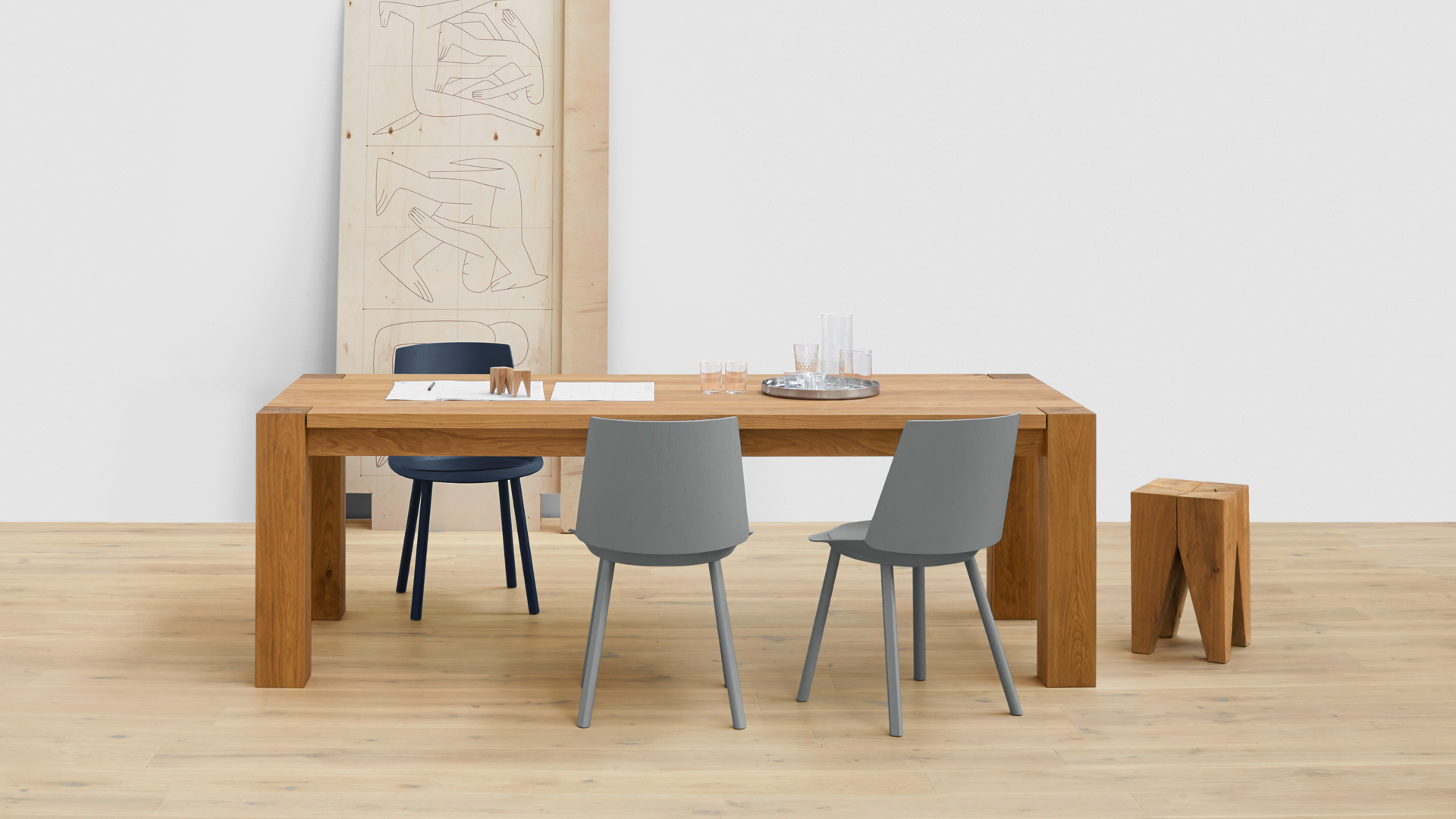Designed in 1994 by e15 founder and architect Philipp Mainzer, a radical new simplicity characterised the design of the table leaving an indelible mark on the evolution of contemporary furniture design.
Bigfoot is one of the initial tables, which young architect Philipp Mainzer drafts whilst still in architectural school. One year later, in 1995, the company e15 is founded and named after the postal code of its first workshop in London’s East End. The unique design of Bigfoot marks the debut of the e15 collection, establishing a pioneering use of solid wood in its purest form whilst solidifying a circular approach as the guiding design principle for the company. Also, the e15 logo is sketched during this time by Philipp Mainzer, developed around the square silhouette of the Bigfoot table leg, which remains unchanged to this day.

Pictured: Philipp Mainzer on a Bigfoot prototype
Experimenting with repurposed wood, the first versions of Bigfoot are made from wooden planks sourced from the walls of old freight wagons. The planks are heavily grained, with cracks and knots telling the story of the tree they came from. The legs of the tables are – until today – made from heartwood, which is back then considered a waste product and not suitable for premium furniture production. e15 is adamant to change this thinking: For their solid wood designs, they aim to process the whole tree, highlighting the unique qualities of wood.
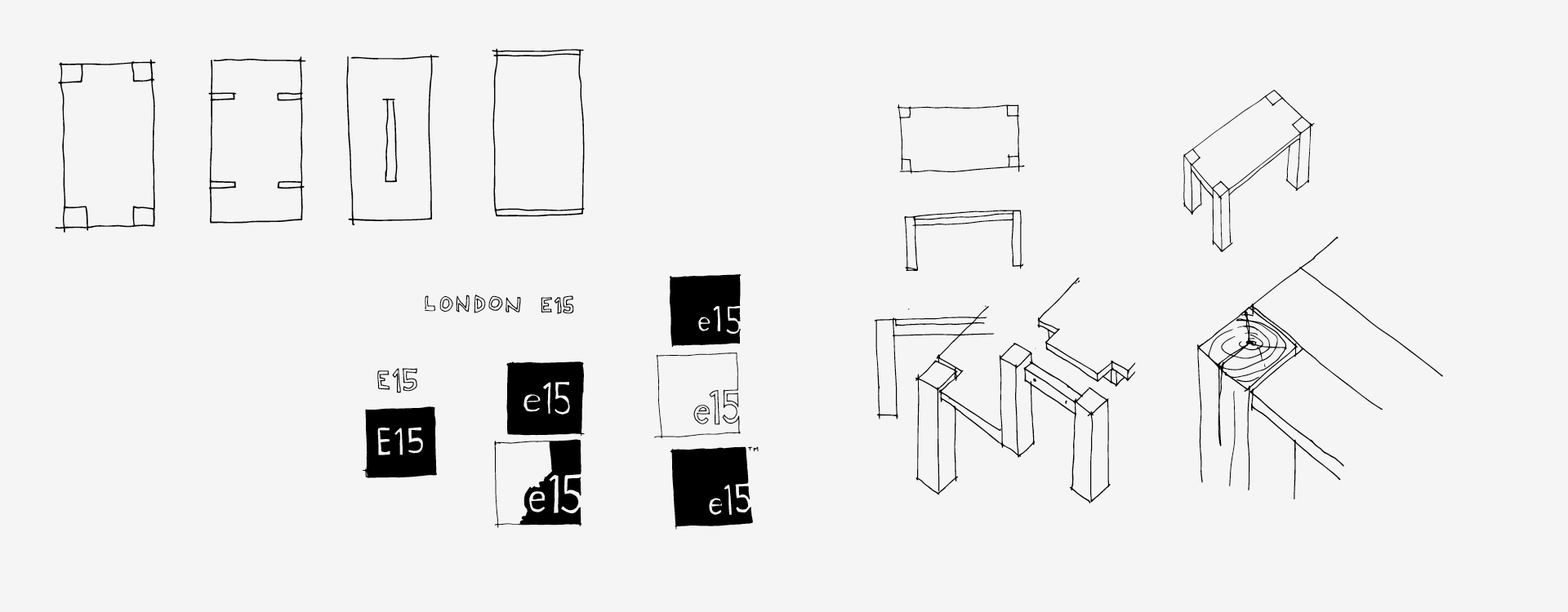
Pictured: Initial sketches of Bigfoot and e15 logo by e15 founder and architect Philipp Mainzer, 1994.
Back in the early 90’s opting for solid oak was an unusual choice of material for another reason: At the time, the market favoured slick Italian designs in smooth, lacquered surfaces, often with glass and metal finishes. This made the use of raw European oak a minor revolution.
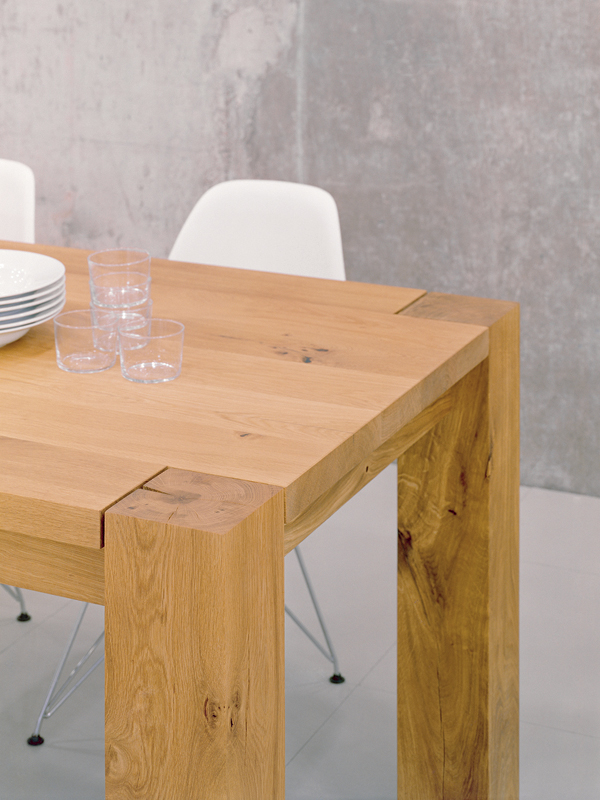
“We first showed Bigfoot at IMM Cologne in 1996, where the general impression was one of surprise and curiosity – solid oak with natural knots and splits was considered as reject quality at the time. Yet Bigfoot’s design underlined and celebrated the pure use of the material. We also realised that no one would walk past our stand without stroking the surface of the table. Wood is a basic and historic material with emotional appeal in furniture making. It is alive and breathing even when it has been formed into a shape. People like the warmth and honesty of solid wood. They like to touch it. This intuitive desire along with the authentic character of the table has made Bigfoot an enduring piece over the years.”
– Philipp Mainzer

